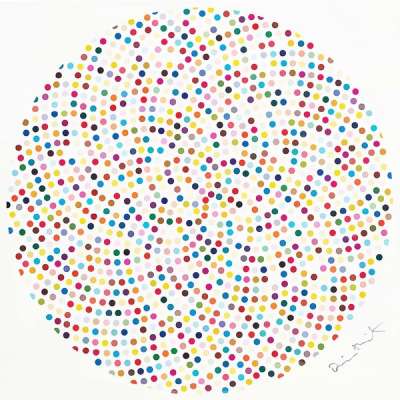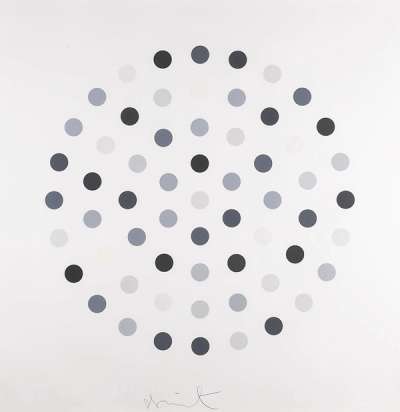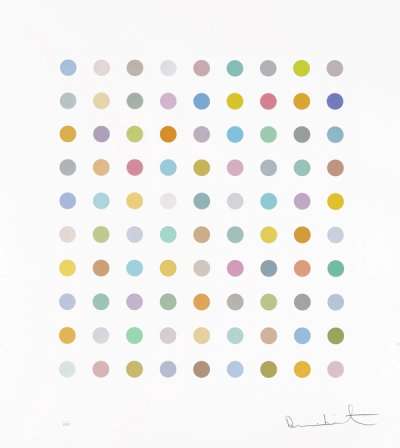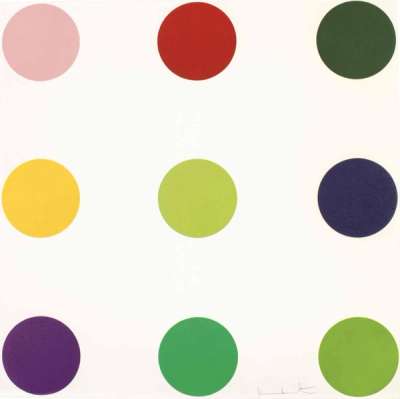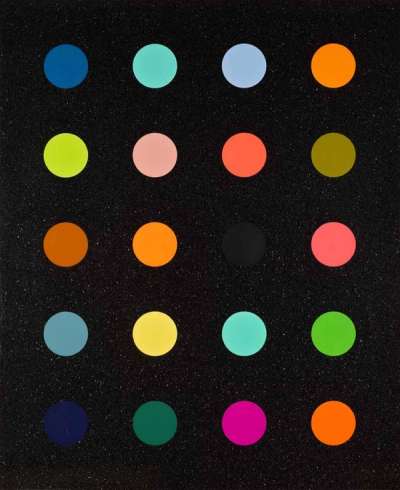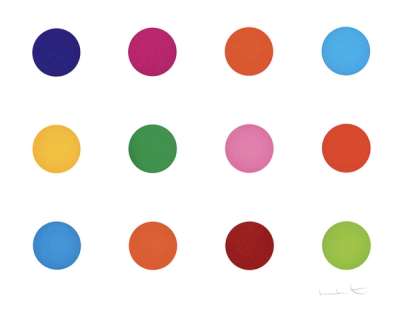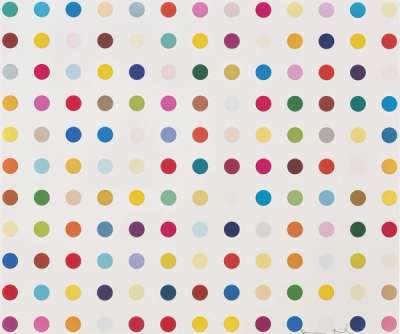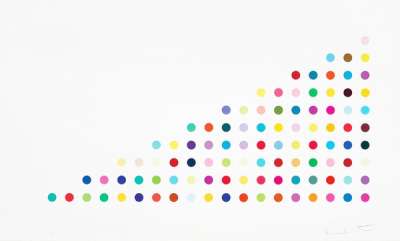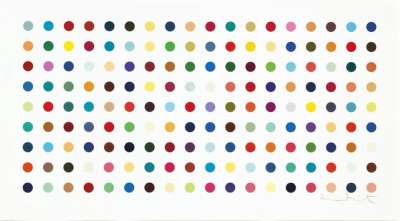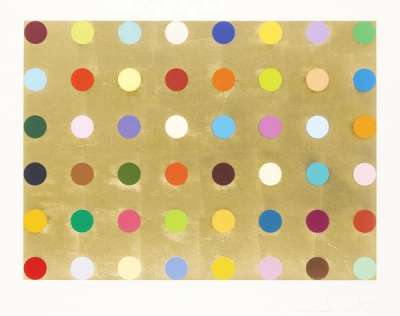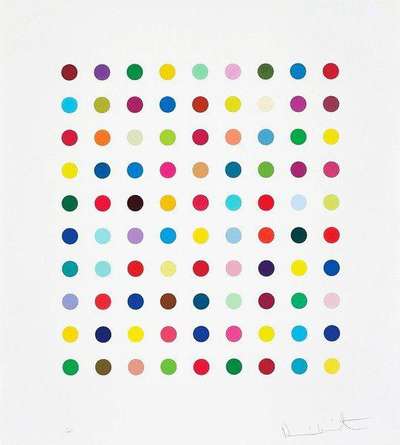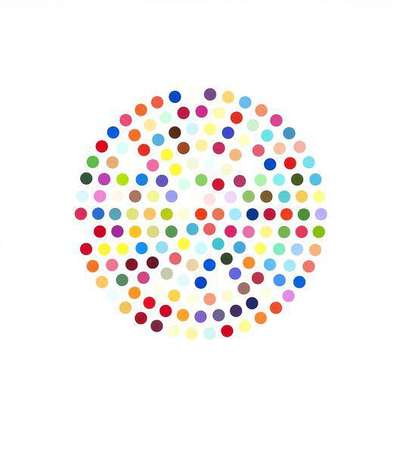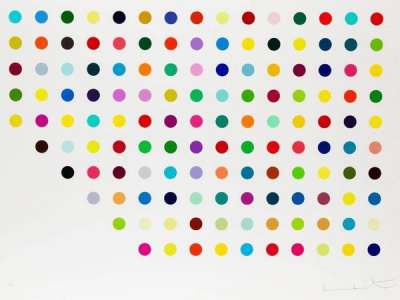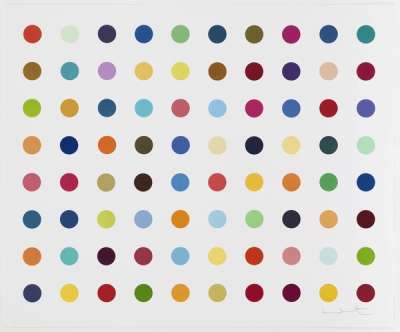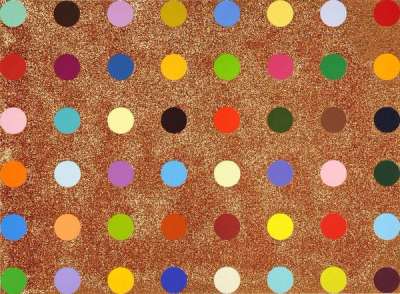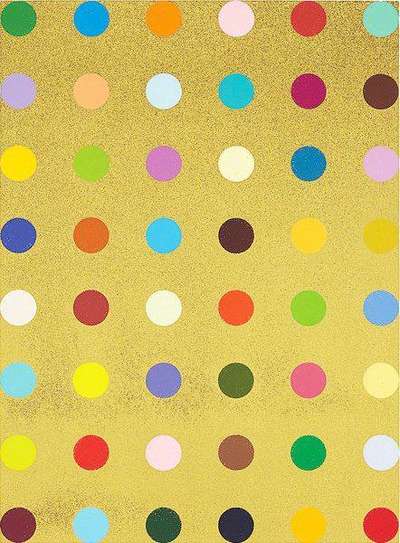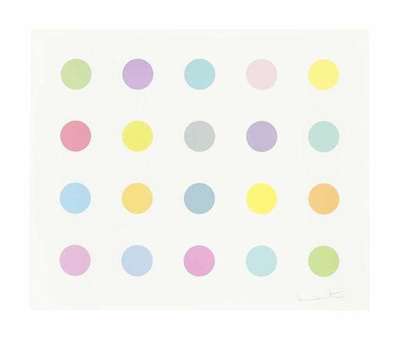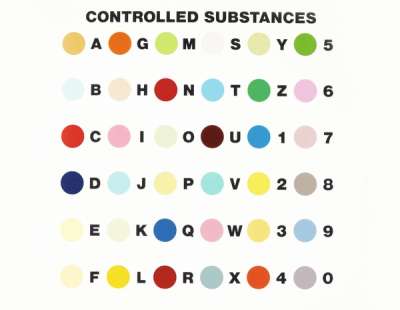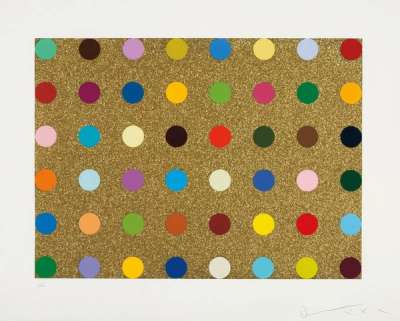
Lepidine

Lepidine
Signed Print
Damien Hirst
£8,000-£12,000Value Indicator
$16,000-$24,000 Value Indicator
$14,500-$21,000 Value Indicator
¥70,000-¥110,000 Value Indicator
€9,500-€14,500 Value Indicator
$80,000-$120,000 Value Indicator
¥1,540,000-¥2,300,000 Value Indicator
$10,000-$15,000 Value Indicator
AAGR (5 years) This estimate blends recent public auction records with our own private sale data and network demand.
There aren't enough data points on this work for a comprehensive result. Please speak to a specialist by making an enquiry.
Medium: Screenprint
Edition size: 150
Year: 2008
Size: H 76cm x W 56cm
Signed: Yes
Format: Signed Print
TradingFloor
Track this artwork in realtime
Watch artwork, manage valuations, track your portfolio and return against your collection
Meaning & Analysis
Lepidine is a screen print by Damien Hirst from 2008, produced in an edition of 150. This print shows a large grid-like composition of brightly coloured spots, set against a silver backdrop. Like the many other Spots paintings, each spot is rendered in a different colour and are evenly spaced apart, but what differs in this print is its use of a silver backdrop.
This print is directly related to Hirst’s very famous series of prints, the Spots paintings, the first of which appeared as far back in his career as 1986. The Spots paintings have been compared to German artist Gerhard Richter’s colour chart paintings from the 1960s and 1970s. Richter’s paintings were produced as a means to generate paintings at random, allowing chance and mathematical logic to determine colour and form. Hirst’s Spots paintings contrastingly allow for an aesthetic that implies systematic logic but retains a process of expressiveness.
Hirst has explained of this: “The first idea was just questioning…painting. I came from that kind of background of Rothko painting: paint how you feel…When I got to Goldsmiths I had a real problem with that kind of expressionism. Because I suddenly realised that it wasn’t really working, but I still had the desire. So, I was trying to scientifically reduce that urge into something… Thinking of a sort of unemotional machine that makes paintings. Trying to place all those expressive decisions made about colour into a grid to create a system where you could just paint how you feel because in the end it is pointless. It doesn’t matter how you feel, they always come out happy…They just looked brilliant so I just carried on making them.”
